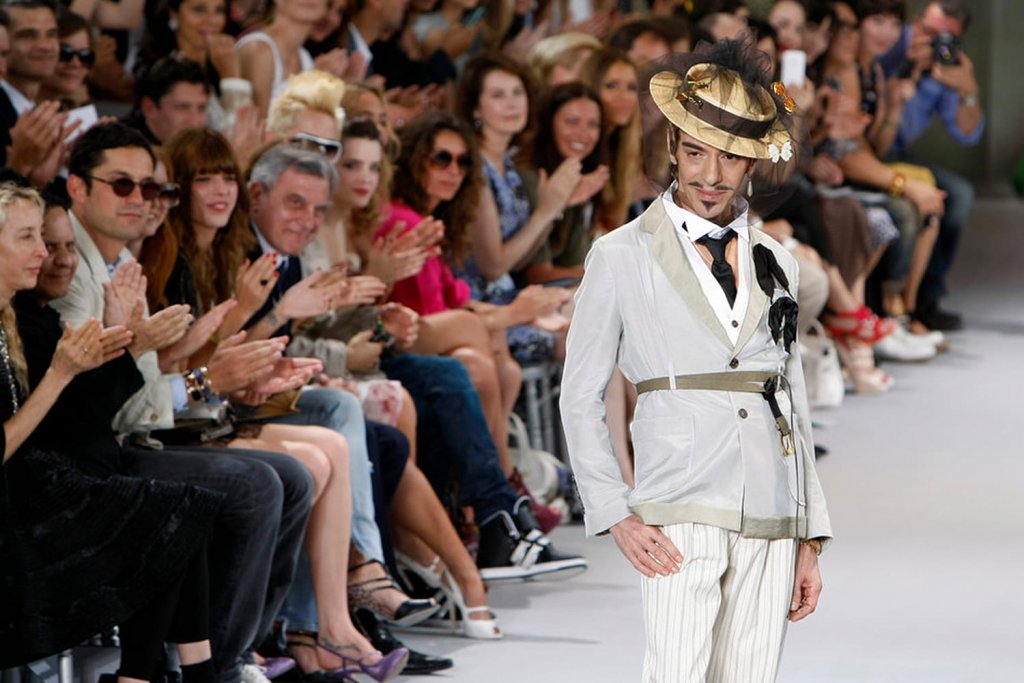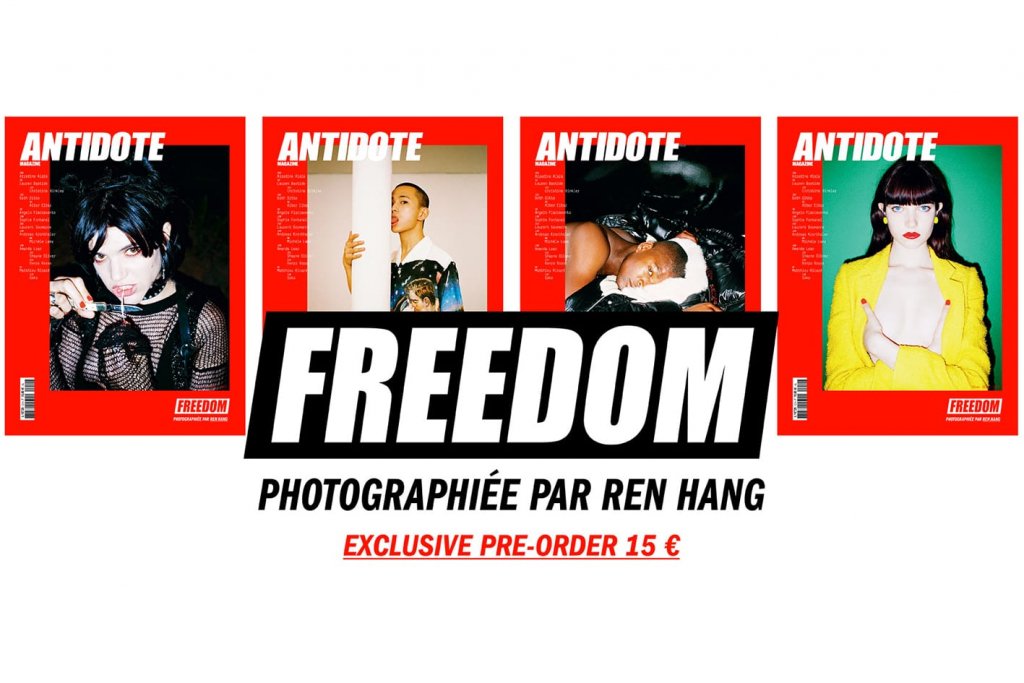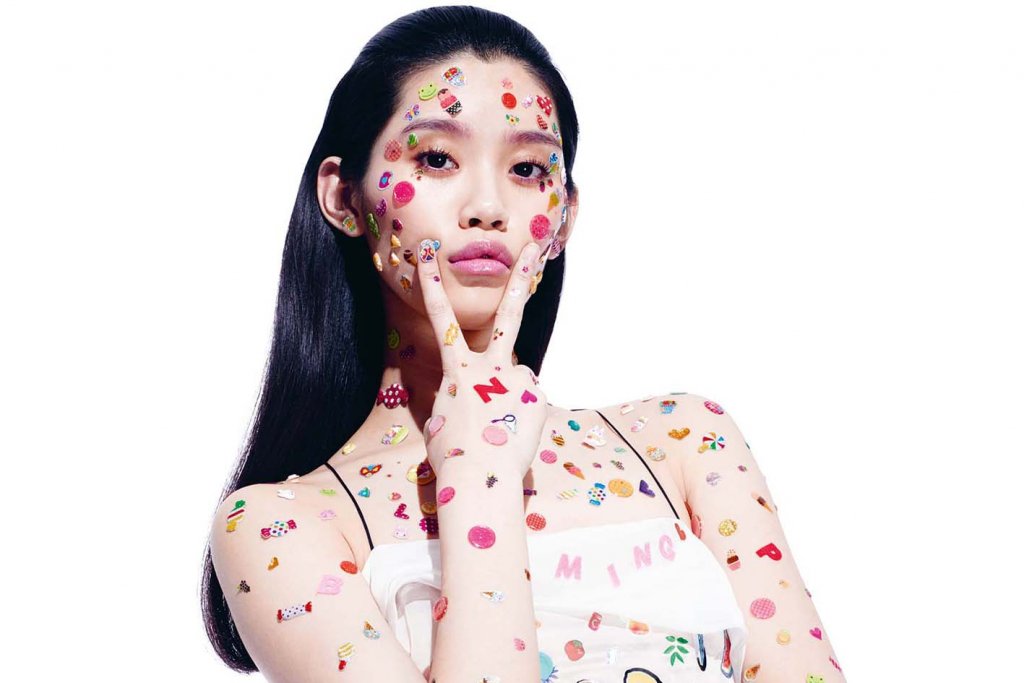The breakneck pace of the modern fashion industry now has designers sticking with brands rarely longer then a few seasons. But designers like Nicolas Ghesquière, Riccardo Tisci or Hedi Slimane have nothing to fear. They have become brand names that today are just as powerful as the houses they represent. They have their own devoted, media savvy clientele who will follow them wherever they go. The world is facing the second coming of the star designer.
The fashion industry is on the cusp of total climate change. Soon a handful of some of the biggest luxury houses in the business will present the first collection of a brand new designer at the helm of their fashion empires. But if there is anything that the past year of musical chairs has shown us it is that fashion designers once again have incredible power to wield. They no longer feel the same allegiance to a house that they once did and they are willing to jump ship. Taking their creative influence with them to wherever they decide to go next. It might still be a stretch to say that we are seeing the death of “brand loyalty” but it certainly seems to be on life support.
Raf Simons, who was just named the creative director of Calvin Klein, might be giving New York Fashion Week a pass this season as he rebrands the company with his distinctive vision but that still leaves quite a few big debuts to look forward to. Maria Grazia has been working hard since mid August on her first womenswear collection for Christian Dior. Anthony Vaccarello has put his eponymous brand on hold while he writes the next chapter for Saint Laurent. And Bouchra Jarrar has installed the staff from her signature brand into the Lanvin offices as she gears up for her first show as its creative director.
Back in the late 90s and the heady early years of the 00’s was when fashion designers were first transformed into international superstars in their own right. John Galliano, Alexander McQueen, Marc Jacobs and Tom Ford became household names and they blew the dust off the august fashion house they worked for. They made Dior, Givenchy, Louis Vuitton and Gucci cool and relevant again while helping their parent companies transform those brands into global luxury players.

John Galliano transformed with Bernard Arnault the house of Christian Dior into a global luxury player.
It was at this point, during what would be the final heady years before the global economic recession caused by the United States housing market crash, that the argument was first made that a brand is bigger than any one designer. That people would continue to flock to Gucci without Ford or Givenchy without McQueen. And for a while things did chug along at an even keel while the average luxury consumer slowly began to realize that the designer that had made the brand hot in the first place was no longer at the house. And, as the fashion world’s collective memory is short, it was easy for a company to fall back on the codes of a house and hire more of a workhorse designer.
But then two important things happened.
Brand learned through trial and error (Julien Macdonald at Givenchy, Paulo Melim Andersson and Hannah MacGibbon at Chloe, Lindsay Lohan at Emanuel Ungaro) that having a talented designer with a clear vision was the only way for a house to remain a major player in the industry. And at the same time designers learned that they didn’t need to rely on brands anymore as a vehicle through which they could reach their audience. The advent of social media – first Facebook, then Twitter and later Instagram – made it possible for designers to connect directly with their loyal fans. #nofilter
Social media gave designers the chance to speak their truth openly to their fan base and it created a two way street of communication. The online universe offered an innovative avenue of access for those savvy enough to use it.
“I think because of the McQueen and Galliano cautionary tale designers working today saw those guys stuck on the hamster wheel and said ‘you know what, we don’t have to do that. If we are miserable, then after two or three years, we have been paid enough and we have enough clout and cache that we can get another job somewhere else, we have our savings and we have our own name,’ ” said Dana Thomas the author of the book “Gods and Kings: The Rise and Fall of Alexander McQueen and John Galliano.”
« They no longer feel the same allegiance to a house that they once did and they are willing to jump ship. »
The perfect example of this next gen digital creative freedom is perhaps Balmain’s designer Olivier Rousteing. He was total unknown when he was thrust into the drivers seat at the house when its former creative director, Christophe Decarnin, left suddenly for personal reasons. Rousteing, who was 24 at the time, took over at Balmain in 2011 and in September of 2012 he joined Instagram. He initially did this because he didn’t like the way the press was depicting him. He wanted to get his real story out. His first post was a photo of his embroidery designer because it was her birthday. Now he counts almost 4 million followers on Instagram alone.
“He cultivated and nurtured his personal brand, and he did it at a house that everyone had given up for dead, so he was really clever. He had nothing to lose and the brand had nothing to lose,” explained Thomas.
Today Rousteing has such name recognition that if he wanted to start his own signature brand he could do so with ease. And during an interview earlier this month on the French television show “On N’est Pas Couché” he subtly and unconsciously let it slip that he might be ready make that leap by answering a question about the style of his designs by saying “It’s not Rousteing, its Balmain, for the moment.”
There are a handful of other designers who also have built up that same level of global awareness that they too have become their own “brand”. Nicolas Ghesquiere, Hedi Slimane, Riccardo Tisci and Alber Elbaz all have – first of all the talent – and the social media infrastructure, to create new powerhouse labels. It’s no surprise that Elbaz launched his namesake Instagram feed just weeks after he departed from Lanvin.
“At first I didn’t want to and then I was asked by Kevin [Systrom] if I was part of Instagram and I said, “no” and he said, “how come?” and I said, “I don’t have photogenic friends, I have real friends”, explained Elbaz about his decision to finally join Instagram. “I didn’t see the reason to photograph every dish I get at a restaurant and every airport I am arriving at. And then when I saw how much love I was getting from everyone. It was so beautiful. I would get a message from a big editor, and from the owner of a big company and then I would get one from the maid, and then from one of my assistants, and from other designers and it was a melting pot of people reaching out to me.”
It is that sense of connection that is key.
This is something that Karl Lagerfeld understood before everyone else in the industry. When Facebook was in its infancy and Twitter was still two years away from going online Karl Lagerfeld (the man and the label) became a worldwide brand name when he decided to be the first fashion designer to team up for a capsule collection with H&M. “[That collection] became a bench mark of changes in fashion retailing – even a foretaste of everyone buying everything on the net, regardless of prices and brand loyalty. Karl, as ever, was clairvoyant,” said Suzy Menkes, the Vogue International editor.
Lagerfeld saw the power that democratizing his design aesthetic would have on the larger fashion landscape and it helped to keep him at the top of the fashion pyramid. The man himself concedes that the collaboration made him a household name, almost the symbol of the fashion industry itself, to the millions of people who exist outside the world of fashion. “I totally agree, but we could not imagine that then. Now it’s worse than a household name, I cannot cross the street alone any longer,” admitted Lagerfeld. It is perhaps for this reason that he, unlike most of the other designers working today, doesn’t have his own official Instagram feed. He has all the global recognition he needs. Instead he lets his cat Choupette have the limelight online. It is interesting then that during the last round of shows there were a lot of articles in the press talking about the end of trends and that the new “trend” was, in fact, fashion tribes. Where consumers follow the lead and style of their preferred designer, just like they followed Lagerfeld to H&M.
This shift away from trend based fashion consumption to one where a luxury clientele makes a commitment to a particular designer’s style is a very strong indicator that we are in the midst of second coming of the star designer.
“Its not unlike following your favorite manicurist or the person who cuts your hair if they move to a new salon. When you find a good one, that you like, you stick with them” said Catherine Miran, the founder of the international press agency that bares her name.
That is certainly what fans of Haider Ackermann are going to do. Follow him to Berluti, were his was just named the creative director. With the appointment of Ackermann overnight the menswear brand has a cool factor as the designer is highly regarded in the industry for his distinctive romantic and lush style. Men (and a fair amount of women) who like his aesthetic are going to be heading to the brand in droves, and many of them for the first time.
But its important to note that, for now, Ackermann is keeping his own label. Is something that Galliano, McQueen and Jacobs were also determined to do, despite working, respectively, for Dior, Givenchy and Louis Vuitton. It remains to be seen if Ackermann will be able to keep up with the post social media, hyper connected and more democratic demands of running two fashion houses in the modern age. Although seeing as Berluti is solely a menswear label he might be able to carry the weight on his shoulders.
We are in the midst of second coming of the star designer.
When I spoke with Anthony Vaccarello just before his appointment to the role of creative director of Saint Laurent became official he was adamant about keeping his eponymous label going even though he understood why people might choose to do so. Speaking at the time about designers that made the decision that “no one forced them to make these choices. And if they do it, then they have really thought about it beforehand. That they do not want to work 24 hours a day for their own brand and a big house. They want to have their weekends, or go on vacation. It’s a life choice. When people say, ‘It’s a shame they closed their company,’ they don’t realize the work that goes into doing things right. If doing both means not being able to do both right, then it is better to stop. They can always come back to their brand later or do something else. I have a great respect for this sort of thing.”
In the end Vaccarello also recently announced that he has decided to put his namesake brand on hold while he focuses on the monumental task of taking on one of the most famous French fashion houses in the world. But his signature label will always be waiting in the wings, if and when he decides to return to it. And by then, his personal Instagram account will surly have thousands of more followers, ready to follow him anywhere.








